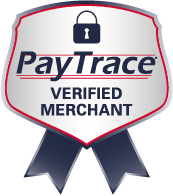If you own or manage a business, you don’t need to be told one more time that social media is important. But it’s one thing to say your company should be on social media; it’s another thing to actually take advantage of it.
Meanwhile, there are more and more social networks sprouting up all the time. For companies that can’t afford a dedicated social media manager, the task of maintaining a social presence only grows more time-consuming and difficult. Plus, not every social network is relevant to your company and its target audience. So what do you do? Here’s a quick guide to choosing your top priorities on social media.
As far as maintaining your digital presence goals, Facebook is invaluable. It’s the biggest social network with the biggest potential reach. While it offers limited organic reach, you can pay for cost-effective advertising to get your brand out among relevant audiences. And, if you already have a personal Facebook account, a business page is very straightforward.
The other benefit of Facebook is that it doesn’t require a lot of upkeep. Most businesses want to limit their posting to one to three posts a day, which alleviates the burden on anyone trying to manage social media in-house. Too much Facebook activity can actually be harmful to your brand, so take comfort in knowing that your most important social media presence will require no more than 10 minutes a day.
Twitter is a massive social network, but it functions very differently from Facebook. Posts are made in real time and disappear from a person’s timeline as other users post their own content. As a result, Twitter requires brands to post content much more frequently, sometimes repeating content links to make sure it reaches a large audience.
While more time-intensive than Facebook, Twitter is still a very valuable way to increase brand visibility while connecting with customers. Another bonus: Twitter users are very active on their smartphones and tablets. If that matches your target audience, Twitter only becomes more valuable.
If you have great ideas for promoting your company visually, Pinterest can be a fantastic option. Recipes, crafts, furniture and DIY projects are among the products and content that have proven very successful on Pinterest. Because its user base is heavily female, Pinterest is ideal for brands targeting women. If you don’t have great options to publish compelling visual content, though, Pinterest may not be an ideal use of your time.
LinkedIn is a strictly business social network. If you’re a business-to-business company, using the LinkedIn platform makes perfect sense. But understand that LinkedIn functions differently than other social networks because its primary function isn’t “social” at all. You will connect with businesses and work professionals on business-related topics, but everything else is unsuited for this platform.
Google+
This one can be a bit of an anomaly, because many users aren’t quite sure how to utilize it. Google+ has a very large user base, but its engagement rates can be much lower than what is seen on Facebook and Twitter. It tends to attract businesses and professionals more than everyday consumers looking to socialize, but both demographics are present.
There are some valid reasons to set up a Google+ business account–even if you don’t update it frequently. For one, you can gain greater control over your business info that is displayed on Google Maps and in Google Web searches, helping customers get the right info about you. Because the time commitment is low, it’s probably wise to set up a Google+ account even if you plan to rarely update it.
For help designing your social strategy and setting up other online marketing campaigns, contact DBC Digital today.


